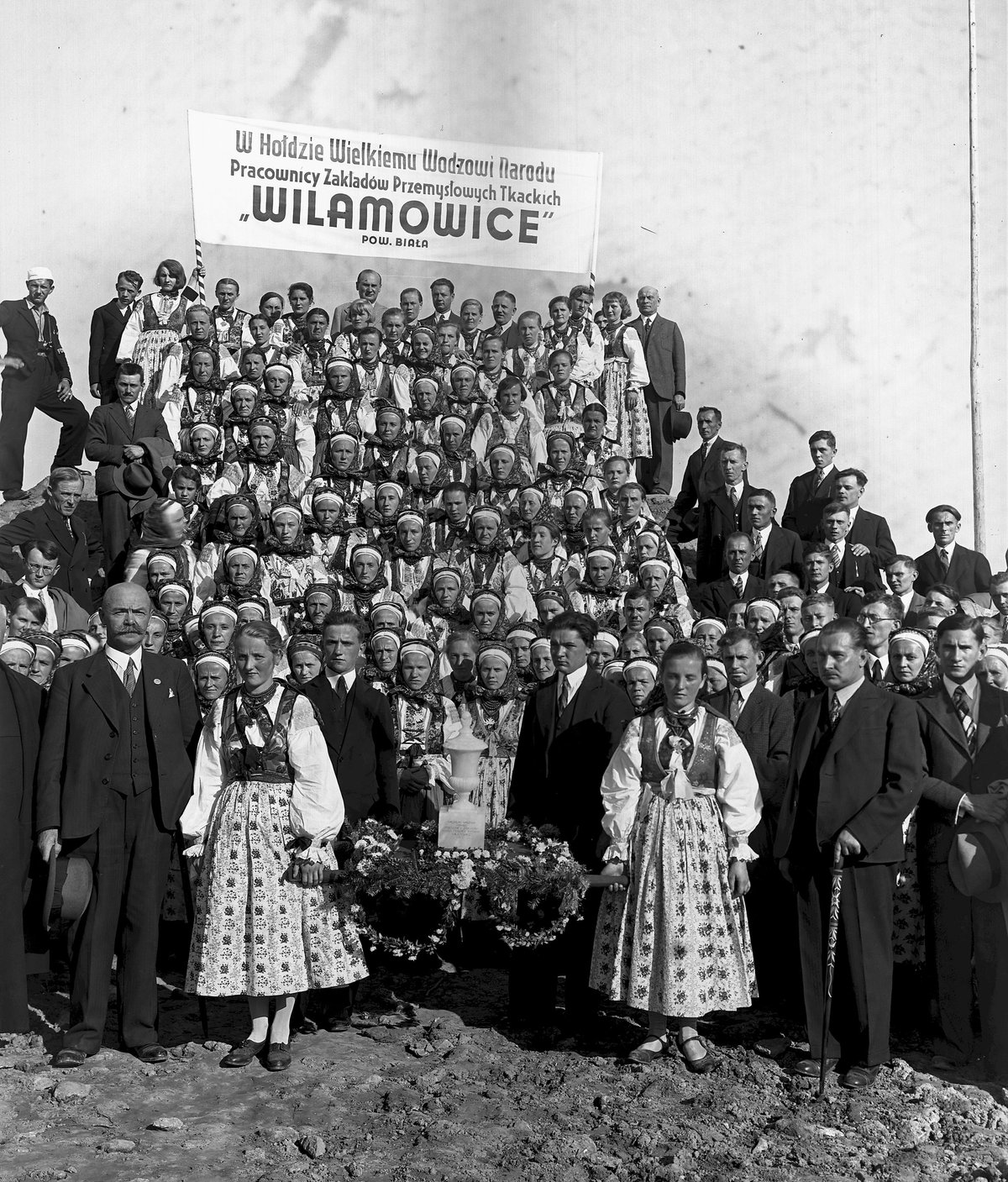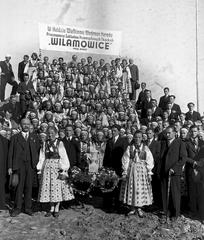
Piłsudski’s Mound Kraków: Visiting Hours, Tickets, and Historical Significance
Date: 14/06/2025
Introduction
Piłsudski’s Mound (Kopiec Piłsudskiego) is the largest and most recent of Kraków’s historic mounds, standing as a powerful symbol of Polish resilience and unity. Nestled within the scenic Wolski Forest, this monumental landmark commemorates Marshal Józef Piłsudski, an instrumental figure in Poland’s reestablishment as an independent nation in 1918. Constructed between 1934 and 1937 by thousands of volunteers, the mound embodies the nation’s enduring spirit and serves as a living testament to the sacrifices made for freedom. Its summit, which incorporates soil from more than 3,600 battlefields and sites of martyrdom, offers panoramic views of Kraków and, on clear days, the distant Tatra Mountains.
This guide explores the origins, symbolism, and contemporary relevance of Piłsudski’s Mound. You’ll find detailed information on visiting hours, tickets, accessibility, and nearby attractions, along with practical travel tips to enrich your visit. For further exploration, virtual tours and apps such as Audiala are available to deepen your understanding of this iconic site.
For more details, see Discover Cracow, Krakow Travel, and Krakow Best Guide.
Table of Contents
- Introduction
- Origins and Construction
- Symbolic Significance: The “Grave of Graves”
- Piłsudski’s Mound Through History
- Restoration and Preservation
- Visiting Piłsudski’s Mound: Hours, Tickets, Accessibility
- Nearby Attractions and Travel Tips
- Kraków’s Four Mounds in Context
- Visuals and Interactive Media
- Frequently Asked Questions (FAQ)
- Conclusion and Visitor Recommendations
- Sources and Further Reading
Origins and Construction
Piłsudski’s Mound was conceived in 1934, following the death of Marshal Józef Piłsudski, to honor his pivotal role in Poland’s regained independence. Located atop Sowiniec Hill in the Wolski Forest, the mound rises 35 meters above its base and reaches 383 meters above sea level, making it the highest point in Kraków. Over 10,000 volunteers participated in its construction, which concluded in 1937. This massive collective effort transformed the site into a beacon of national pride, visible from across the city (Discover Cracow).
Symbolic Significance: The “Grave of Graves”
Known variously as the Independence Mound, Freedom Mound, or “Grave of Graves” (Mogiła Mogił), Piłsudski’s Mound embodies Poland’s collective memory. Soil from over 3,600 battlefields and martyrdom sites was brought from every corner of the country and incorporated into the mound—an act that united the sacrifices of generations in a single, sacred memorial. This symbolic gesture resonates deeply within the Polish consciousness, reinforcing the mound’s status as a national shrine.
Piłsudski’s Mound Through History
Throughout the 20th century, Piłsudski’s Mound endured threats of destruction and neglect. During World War II, Nazi occupiers considered demolishing the mound, but the plan was never executed. In the communist era, the site’s significance was downplayed; a tank damaged its granite slab in 1953, and efforts were made to rename and obscure its meaning. Despite these adversities, local communities and craftsmen restored the mound’s base and perimeter in 1963, ensuring its survival as a symbol of Polish independence and unity.
Restoration and Preservation
From the 1980s onward, restoration initiatives stabilized the mound, addressed erosion, and improved accessibility. These efforts, often supported by local and national organizations, reaffirmed Piłsudski’s Mound as an essential part of Kraków’s historical landscape. Today, the site is well maintained and integrated into the recreational Wolski Forest, attracting both locals and visitors year-round.
Visiting Piłsudski’s Mound: Hours, Tickets, Accessibility
- Visiting Hours: Open daily from dawn to dusk, year-round. Seasonal changes may affect daylight hours; check local tourism resources for updates.
- Admission: Entry is free.
- Accessibility: The approach involves a moderate uphill walk on gravel paths; wheelchair access is limited. Nearby Wolski Forest trails offer varying degrees of accessibility.
- How to Get There: Take public transport (bus lines 134 or 300 to “Zoo Kraków”), followed by a 20–30 minute walk through scenic forest paths. Parking is available near Kraków Zoo, but may be limited during peak times. Cycling routes also lead to the site.
- Facilities: Picnic areas, benches, and a children’s playground are located at the base; restrooms are limited. Refreshments are available at the nearby zoo or by bringing your own.
Nearby Attractions and Travel Tips
- Wolski Forest: Over 400 hectares of woodland with hiking and cycling trails, ideal for nature lovers.
- Kraków Zoo: Home to over 1,400 animals; entrance fee required.
- Camaldolese Hermit Monastery: Accessible by a pleasant walk from the mound; open to visitors during designated hours.
- Srebrna Góra Vineyard: Offers wine tastings by appointment.
Tips:
- Visit in spring or autumn for the best weather and visibility.
- Early morning or late afternoon visits provide beautiful lighting and fewer crowds.
- Wear comfortable shoes and bring water, especially in summer.
- Respect the site as a national memorial.
Kraków’s Four Mounds: Context and Comparison
Kraków’s landscape is uniquely marked by four monumental mounds, each reflecting a different era and narrative in Polish history:
- Krakus Mound: The oldest, possibly dating to the 7th–8th centuries CE, and linked to King Krakus, Kraków’s legendary founder. It offers panoramic city views and hosts the annual Rękawka festival (audiala.com).
- Wanda Mound: Associated with Princess Wanda, also of mythic origin; located in Nowa Huta.
- Kościuszko Mound: Built from 1820–1823 to honor Tadeusz Kościuszko, leader of the 1794 uprising. Features a museum and is the most developed for visitors (krakow.wiki).
- Piłsudski Mound: The newest and largest, commemorating Poland’s 20th-century struggle for sovereignty (krakow.travel).
Visiting all four mounds provides a comprehensive journey through Kraków’s legendary, medieval, and modern past (theuniquepoland.com; emilysguidetokrakow.com).
Visuals and Interactive Media
Virtual tours and high-quality images are available on Kraków’s official tourism websites, enhancing your planning and anticipation before your visit.
Frequently Asked Questions (FAQ)
Q: What are Piłsudski’s Mound visiting hours?
A: Open daily from dawn to dusk, year-round.
Q: Is there an entrance fee?
A: No, visiting Piłsudski’s Mound is free.
Q: Is the site accessible for people with disabilities?
A: The path is gravel and moderately steep; accessibility is limited. Some nearby forest trails are easier for those with mobility challenges.
Q: How do I reach Piłsudski’s Mound by public transport?
A: Take bus 134 or 300 to “Zoo Kraków,” then follow marked trails through the Wolski Forest.
Q: Are guided tours available?
A: Yes, especially during public holidays or by arrangement with local tour operators.
Q: Are there special events held at the mound?
A: Yes, major commemorations include Independence Day (November 11) and Piłsudski’s birthday (December 5), featuring patriotic ceremonies.
Conclusion and Visitor Recommendations
Piłsudski’s Mound stands not only as a profound emblem of Polish independence and collective memory but also as an inviting destination for travelers interested in history, culture, and natural scenery. Its free admission, accessibility year-round, and proximity to other attractions make it an essential stop in Kraków. By visiting, you honor the sacrifices of the past while enjoying the tranquil beauty of Wolski Forest and panoramic city views.
Enhance your experience by joining guided tours, attending commemorative events, and utilizing interactive resources like the Audiala app. For updated visitor information, consult local tourism websites and follow social media for the latest insights into Kraków’s heritage.
Sources and Further Reading
- Discover Cracow
- Krakow Travel
- Krakow Best Guide
- krakow.wiki
- theuniquepoland.com
- audiala.com
- emilysguidetokrakow.com
- wikipedia
- inyourpocket.com
- wanderlog.com
Download the Audiala app for personalized travel guides and discover more about Kraków’s heritage sites. Follow us on social media for the latest updates and travel inspiration.































































